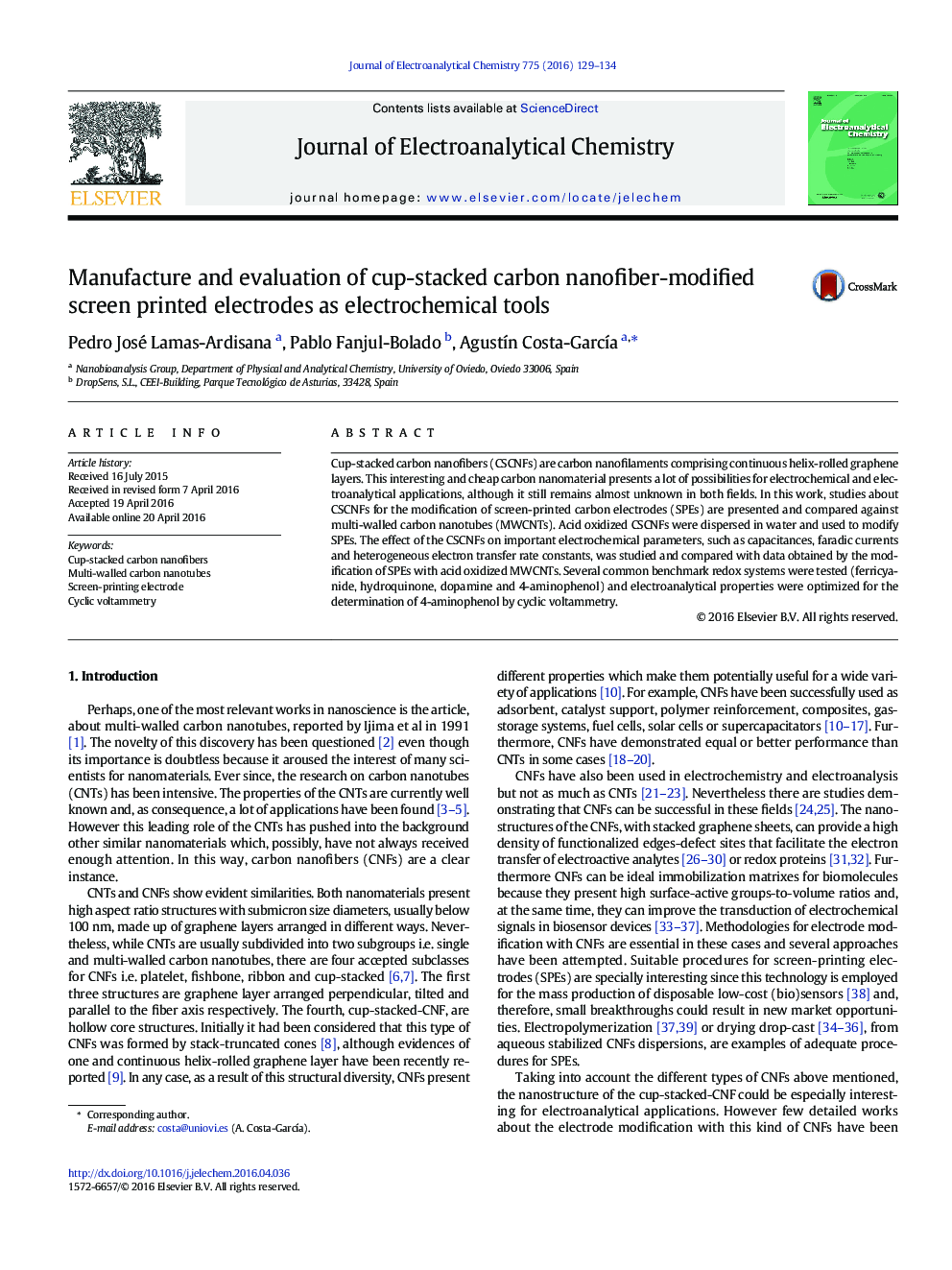| Article ID | Journal | Published Year | Pages | File Type |
|---|---|---|---|---|
| 217836 | Journal of Electroanalytical Chemistry | 2016 | 6 Pages |
•Stable water dispersions of cup-stacked carbon nanofibers (CSCNF) were prepared and used for the modification of screen-printed electrodes.•Modifying electrode surfaces with functionalized CSCNFs or MWCNTs can provide similar effects for electrochemical and electroanalytical applications.•Functionalized CSCNFs are promising nanomaterial for (bio)sensor construction and/or electrochemical transducers.
Cup-stacked carbon nanofibers (CSCNFs) are carbon nanofilaments comprising continuous helix-rolled graphene layers. This interesting and cheap carbon nanomaterial presents a lot of possibilities for electrochemical and electroanalytical applications, although it still remains almost unknown in both fields. In this work, studies about CSCNFs for the modification of screen-printed carbon electrodes (SPEs) are presented and compared against multi-walled carbon nanotubes (MWCNTs). Acid oxidized CSCNFs were dispersed in water and used to modify SPEs. The effect of the CSCNFs on important electrochemical parameters, such as capacitances, faradic currents and heterogeneous electron transfer rate constants, was studied and compared with data obtained by the modification of SPEs with acid oxidized MWCNTs. Several common benchmark redox systems were tested (ferricyanide, hydroquinone, dopamine and 4-aminophenol) and electroanalytical properties were optimized for the determination of 4-aminophenol by cyclic voltammetry.
